So you’ve just started (or want to start) drifting your RC car. Drifting RC cars can be a fun and satisfying hobby for people of all ages. But maybe you feel like your skills can only take you so far with your current vehicle. Here are some ways to make sure that your car is drifting at its best performance.
Below we’ve got 9 tips and ideas to help you improve your RC car’s drifting. These range from simple tweaks to equipment upgrades, but there should be something that everyone can try.
Not all RC cars can drift right when they come out of the box. While most have the capacity to drift with some modifications, yours might not currently have the tools it needs to do so.
So what does it need? If your car isn’t already driftable, you’ll need drift tires, you’ll need to adjust its shocks and wheel angles, and you’ll need to add in counter steering.
Drift Tires
What are drift tires? Drift tires usually have shallow, almost bald treads to prevent them from gripping the ground too firmly. You need tires that are smooth enough to slip over the surface instead of digging in. For an RC car, these should only cost about ten to twenty dollars, which is fairly cheap all things considered.
However, if you’re converting an ordinary RC car into a drifter but for some reason can’t find any drift tires nearby, then you can convert your usual tires into drift tires by putting electrical tape over them. This isn’t a super permanent solution as the tape will come off eventually, but if you’re just starting it should be totally fine.
Shocks
Shocks are extremely important for drifting cars, but that doesn’t mean that you need to get the best possible springs for your first drifter. As long as the back springs are softer than the front ones, you’ll be fine.
Springs are rated by the weight that it takes them to compress. Softer springs take less weight to become compressed, so when looking for drifting springs, you’ll be looking for springs with lower ratings
. A normal range for your front compression is 35–45, while a normal range in the back is 15 to 20.
Softer springs take less weight to become compressed, so when looking for drifting springs, you’ll be looking for springs with lower ratings
. A normal range for your front compression is 35–45, while a normal range in the back is 15 to 20.
Your shock positions also matter for the sake of drifting, and you’ll want your back suspensions to be more vertical while your fronts are allowed to spread out a bit more.
Wheel Angles
Traxxas Slash skidding aroundThis is also known as the camber of your vehicle, a useful word to know if you’re working with other RC hobbyists. The camber of the wheels is the angle at which they meet the ground. While you don’t need to mess with the camber in the rear, it may be useful to change the camber in the front.
Related post: How Fast Are RC Drift Cars?
You’ll want to bring the camber so that the top of the wheel leans ever so slightly toward the inside of the vehicle. This offsets the usual loss of traction caused by making tight drifting turns by ensuring that the entire tire is in contact with the ground during the turn.
Camber isn’t nearly as critical in RC cars as it is in 1:1 racing, but it is still something that can put your vehicle ahead of the curve.
Wheel Differential
The wheel differential is basically the difference between how far each of the wheels turns when you tell your RC car to start turning. Ideally, this will be zero, and to make sure this is the case you’ll have to do some slight modifications to your vehicle’s steering system.
This is a little more complicated of a modification, so you’ll want to start by contacting an expert for help, although once you know what you need to do, you should be able to do it yourself.
While it’s possible to convert pretty much any RC car into a drifter with some effort and know-how, you can probably just buy a new one for only a little bit more than it would cost to buy all the parts and it would take significantly less work.
Pre-made drifters are a great choice for beginners because you don’t need to do any guesswork with modifications or anything else. You can just start racing as soon as you get the car, which is way better than fiddling with your mods for hours and hours every day.
You can just start racing as soon as you get the car, which is way better than fiddling with your mods for hours and hours every day.
If you’re looking for the adventure of building your own RC drifter out of another vehicle, then go for it! It’s totally something that you can do.
If you want to know what to look for in a good RC drift car, please check out my article covering this topic in detail.
But what if you already have an RC drifter and you want to make it drift better?
There are two ways that you can run an RC drifter. Either it can share some amount of its driver power between the front wheels and the back, or it can use full rear-wheel drive (RWD.) RWD feels much more like a 1:1 car than four-wheel drive does, and for a lot of people, it changes drifting significantly.
Check out this post: The 8 Best RC Cars For Sand Dunes
However, some people find that four-wheel drive (4WD) feels a lot better than RWD does.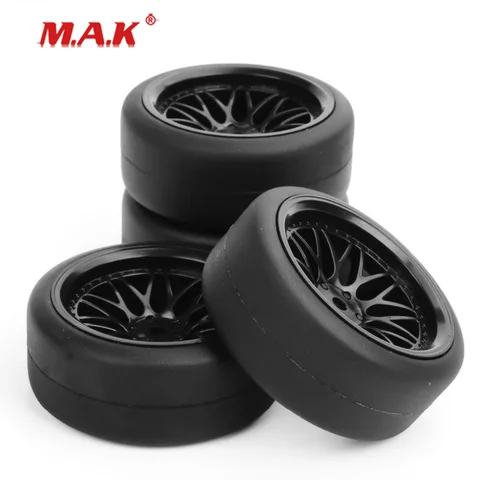 If you’re struggling with an RWD car, then you might want to convert it to 4WD or at least try out a friend’s 4WD to see how it feels. This might be a matter of taste, but it can still have a huge effect on your drifting experience.
If you’re struggling with an RWD car, then you might want to convert it to 4WD or at least try out a friend’s 4WD to see how it feels. This might be a matter of taste, but it can still have a huge effect on your drifting experience.
But before you do that, you might want to check to make sure your RWD car has a gyro.
This is only really useful for RWD cars, as 4WD doesn’t have as much of a balance problem. Because RC cars are so small, it isn’t uncommon for them to end up spinning out while trying to drift. A gyro is a small electronic device originally designed for RC helicopters that helps to prevent this from happening.
A gyro is practically a necessity for any RWD vehicle that you want to drift with. If you just converted your vehicle to RWD or your vehicle just doesn’t have one for some reason, you’ll need to install one.
Acceleration is critical in drifting, and to keep your acceleration up, you might find that you need to run a slightly stronger motor.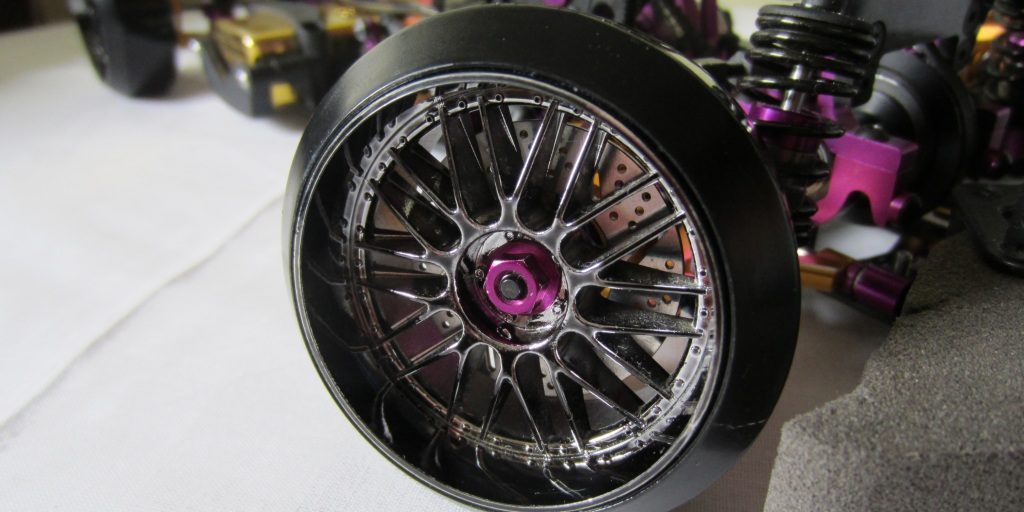 RC motors are measured in rotations and most run off of electric power.
RC motors are measured in rotations and most run off of electric power.
You can do all sorts of things with your gears to make the car accelerate faster or give it a higher top speed. However, if you really want to pump up the power, you just need to get a motor with a higher output.
You might be able to upgrade to a brushless motor, which would give your vehicle significantly more power to work with. However, brushless motors can be expensive and difficult to operate, so be careful when making this choice.
While we are on the subject of RC motors, you may be interested in my article covering which turn motor is best for RC drifting
You can also increase the output of your current motor by getting more powerful batteries, although you should check with an expert before doing this since it has the potential to seriously damage your vehicle.
Aside from the engine, there are a number of your RC car’s pieces that you can upgrade to get a little bit of an advantage.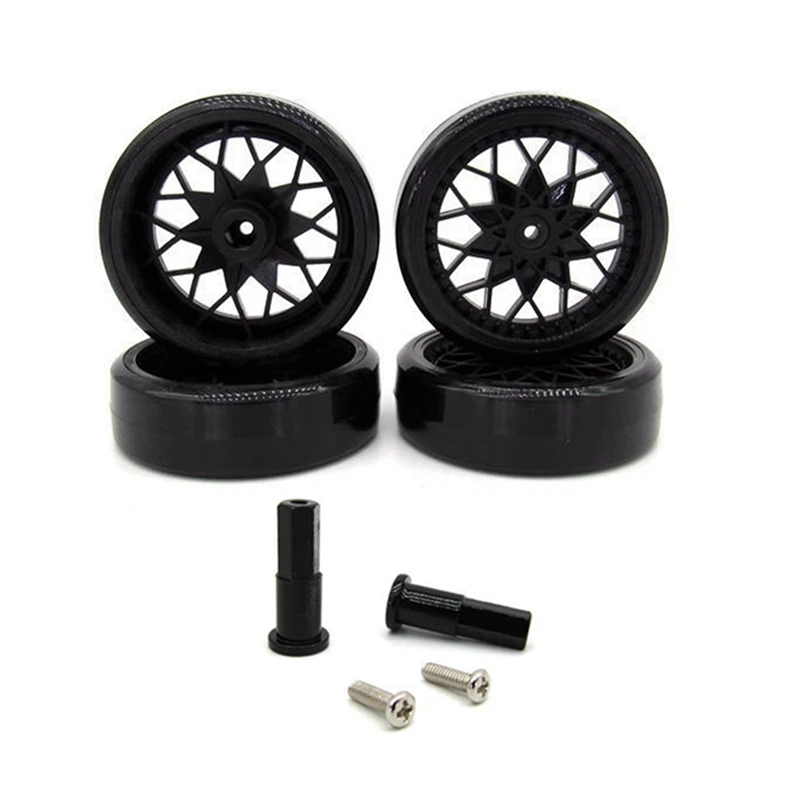 These won’t make you a better driver by any means, but if you’re already fairly proficient and you just want a little boost for your next race then these might be good things to look at.
These won’t make you a better driver by any means, but if you’re already fairly proficient and you just want a little boost for your next race then these might be good things to look at.
Tires: If you’ve been using taped-up regular tires, it might be time to switch them in for a better model. Most people love the HPI t-drift tires, and so those are a great place to start. Other varieties that have a lot of fans include Tamiya DrifTech and Speed Way Pals.
ESC Fan: The ESC (Electronic Speed Controller) is exactly what it says on the box: A small electronic device that controls the speed of your RC car. Because it uses a superconductor to do its thing, it can overheat fairly easily. If your RC car doesn’t have an ESC fan or the one it does have doesn’t work very well, you should think about installing one or replacing the one you have.
For more on RC fans, check out my article: Do RC motor fans work? Are They Worth It?
Battery Pack: The battery pack that came with your car is almost certainly satisfactory. However, it is one of the easiest parts to replace with something better. When looking for a replacement battery pack, you’ll either be looking for one that is significantly lighter than the one you already have or be looking for one that’s compatible with stronger batteries.
However, it is one of the easiest parts to replace with something better. When looking for a replacement battery pack, you’ll either be looking for one that is significantly lighter than the one you already have or be looking for one that’s compatible with stronger batteries.
A lighter battery pack will improve your acceleration. Because the weight of the batteries themselves isn’t really something you can change yourself, this is a really good way to shave off a little bit of extra weight without messing with anything too important.
This might be controversial, but belt drives offer significantly better control, which you absolutely need for an RC drifter. While a Piston drive isn’t likely to be ruining your drifting experience, switching to a belt will probably make it at least a little bit easier to make those little moves than it was before.
While converting an ordinary RC car into a drifter might involve slight changes to the camber, one thing that you can do to try and optimize your drifter is experiment with slightly different cambers. While keeping in mind that the camber doesn’t need to be especially extreme, you can definitely get significant mileage out of tinkering it until it feels right.
While keeping in mind that the camber doesn’t need to be especially extreme, you can definitely get significant mileage out of tinkering it until it feels right.
Most people keep their camber between 1 and 3 degrees, which prevents many of the problems associated with a high camber but certainly grants several advantages on the track. At this stage, you might also want to put a little camber on the back wheels as well as the front, even if it is a little less important than the front.
Getting the camber just right can definitely help you drift a lot easier, so it’s definitely a good idea to mess with it just a little bit to get it feeling perfect.
One of the best ways to make your RC car drift better (assuming that it already can drift) is to improve your own technique. No matter what mods you’ve made to your car, it is still the operator primarily who determines whether drift can be successfully achieved.
The best way to improve your technique is to watch other racers and practice. There’s probably at least one other person who races at the same track as you. Watch what they’re doing with their hands! Are they doing the same thing you’re trying to do? If not, then what are they doing?
There’s probably at least one other person who races at the same track as you. Watch what they’re doing with their hands! Are they doing the same thing you’re trying to do? If not, then what are they doing?
As soon as you have a vehicle that will drift, you can start improving through practice. How you practice is how you race, so whenever you do a modification on your vehicle you should be sure to get in a couple of hours of practice at the track to get a feel for it.
You may also be able to find some guides or videos online to help you improve. These are a great resource, especially if you’re the kind of person who learns by reading and watching. Ultimately, improving your technique is all up to you though, and that’s the fun part in my humble opinion.
Before you toss me into the ocean, just hear me out. Forums tend to have a good number of decent ideas. Of course, r/rcdrift is a fairly active subreddit that will probably give you (mostly) helpful answers. Drift mission is another site that has guides for new drifters and forums for older ones to ask questions in.
Drift mission is another site that has guides for new drifters and forums for older ones to ask questions in.
While some people on forums might have dubious qualifications, most people in these particular communities are friendly and helpful to newcomers. If you’ve come to the end of your rope and don’t see any other posts about it, then it might be time to ask the internet for help!
This applies doubly to any experts who work at your track. They’re actually even better to ask for help from than forums (if you can believe that.) They will almost certainly be able to help you, at least a little bit.
I hope that this article has helped you in some way. Please check out more of my content covering all aspects of RC cars, planes, boats, drones, and helicopters at goodiesrc.com
Posted: 7/12/22
RC car drifting is all the rage.
 Here’s how to get started.
Here’s how to get started.
RC car drifting is one of the most exciting things you can do with your radio-control vehicle. It’s fun, challenging, and recreates a full-size racing maneuver that drives spectators wild. Remote control car drifting also isn’t that hard to do once you learn about the equipment, surfaces, and driving techniques that make it easier to accomplish. And while there are RC cars specifically designed to be RC drift cars, other street cars can be turned into drifters.
If you don’t already know, drifting is a series of controlled slides that allow a full-scale race car or radio control car to move through the curves and corners of a track more quickly than the conventional way (in which all four wheels grip the surface). The driver intentionally oversteers, causing the tires to lose traction and the car to skid or slide. Through precisely timed braking, accelerating, and counter-steering, a skilled driver can control those slides and use them to maneuver rapidly through corners.
Mastering the basics of RC car drifting is easy. Perfecting your drift skills will take some time and practice. Using the advice that follows, you can get a successful head start into one of the fastest-growing segments of the RC car hobby: RC drift cars.
How to choose the best equipment for your RC drift car.
On any RC car or truck used for drifting, it’s especially important to choose your tires carefully. The friction of drifting causes an extraordinary amount of wear to RC drift tires. But there’s more to be concerned with than that.
You’ll want a clean set of slick tires on your RC car for drifting. Knobby tread or grooved tires will grip the surface too well for sliding. Tires with even light tread won’t drift as well as slicks. If you don’t have slicks available, you can reduce the tread depth on tires you do have by burning them against the ground to wear them down. Tires made specifically for drifting are available from the Integy and Tamiya brands.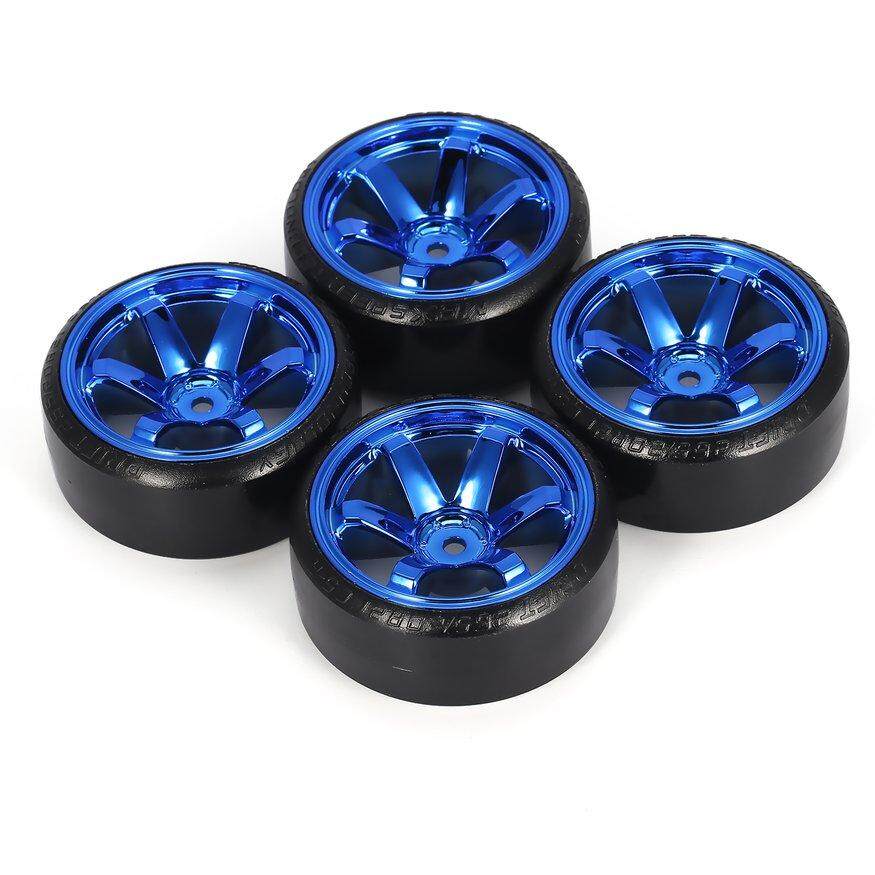 ARRMA® also offers dBoots® Hoons™ belted tires that are often recommended for drifting.
ARRMA® also offers dBoots® Hoons™ belted tires that are often recommended for drifting.
For the best throttle control, you may want to power your RC drift car with a sensored brushless motor. Bigger isn’t necessarily better. Less powerful motors tend to have the smoothest power delivery. The Spektrum™ Firma™ 85A Brushless Smart ESC and 3300Kv Sensorless Motor Combo provides decent speed with great control over your vehicle. It’s not so fast that you’ll have to fight with the car to drive it. Experienced RC drivers frequently have several motors in their pit bag to match their RC drift car’s power to the demands of the surface.
Of course, the type of RC car you use is going to make a big difference in your ability to drift. Don’t expect to pull massive skids using your RC monster truck. Ideally, you’ll want an RC car made for drifting. These are usually electric powered, with a stiffer suspension and lower ground clearance than the typical radio control buggy.
RC cars and RC chassis made for drifting allow for many tuning options and modifications.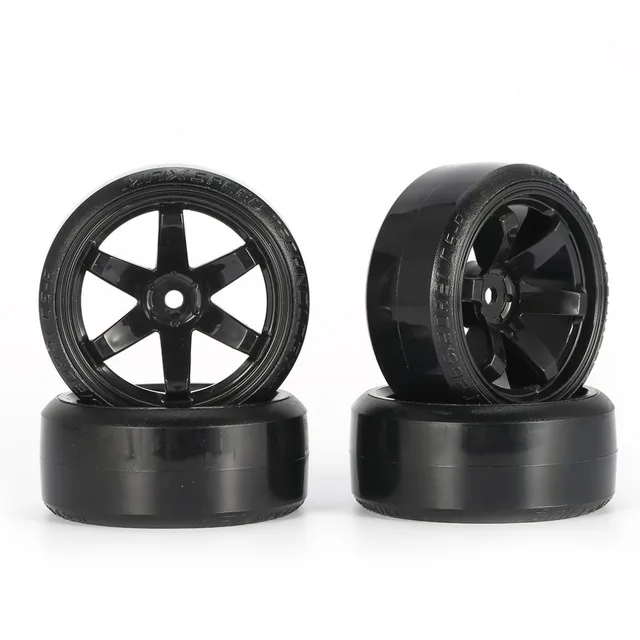 The suspension geometry will likely be fully adjustable out of the box and include drift-specific spring and shock setups. Using upgrades, you’ll be able to get the RC drift car to handle exactly like you want. With an RC drift chassis that has the right setup and your favorite body on top, RC drifting is unbelievably realistic.
The suspension geometry will likely be fully adjustable out of the box and include drift-specific spring and shock setups. Using upgrades, you’ll be able to get the RC drift car to handle exactly like you want. With an RC drift chassis that has the right setup and your favorite body on top, RC drifting is unbelievably realistic.
The Redcat Racing Lightning EPX is a good example of a 1/10 scale electric RC vehicle designed specifically for RC drifting. Its drift-specific tires allow effortless drifting along corners while maintaining steady momentum. It also has a lightweight chassis that improves drift recovery and allows quick response to direction changes.
This doesn’t mean you can’t drift unless you have an RC drift car or drift chassis. You can, but not as well as with an RC vehicle made for drifting. Any RC car with rear-wheel drive will do. A 4-wheel drive radio control car will have too much grip and probably won’t be able to slide around the curves.
How to select the best surfaces for RC drifting.
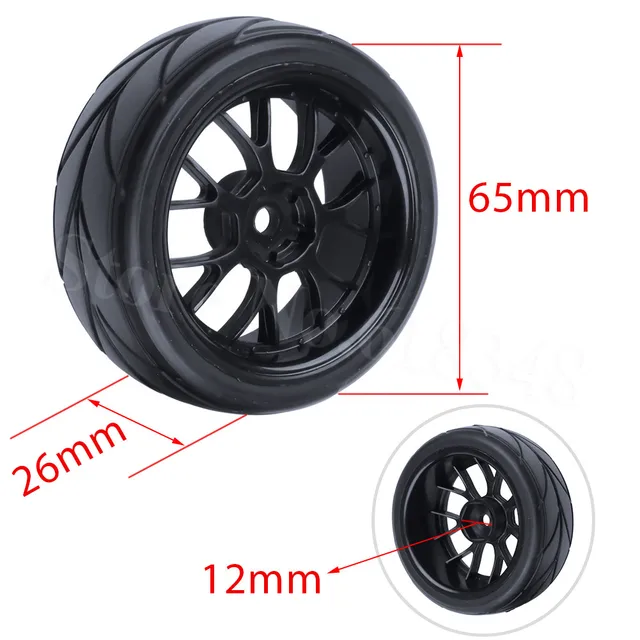
If you plan to drift your RC car, the choice of driving surface is a very important consideration. Ideally, you’ll want to drift at an indoor track made specifically for RC car drifting, but there may not be one nearby.
The best alternative is to find terrain that’s as smooth as possible. Indoor floors are perfect, and a driveway or smooth pavement may also work well. You could set up your own track — many RC tracks are made from rubber, which is a great material for inducing drifts — but that could be expensive, and you’d need a lot of space. Avoid surfaces like gravel, rough pavement, or soil.
Learn the basic techniques for RC drifting.
When you have your RC car equipped for drifting with slick drift tires and you’ve located a nice, smooth surface for practicing, you’re ready to start learning the basic techniques for drifting. If you aren’t on a track, mark a curve with orange cones or rocks.
The first technique to learn is how to initiate a drift by accelerating your RC car into the curve. Completing an ordinary turn with any RC car is pretty simple. You just steer your RC vehicle in the desired direction. Normally you reduce speed somewhat so that all four tires stay in contact with the road. But if you want to make your RC car or truck drift through the corner, losing some tire traction is part of the plan.
Completing an ordinary turn with any RC car is pretty simple. You just steer your RC vehicle in the desired direction. Normally you reduce speed somewhat so that all four tires stay in contact with the road. But if you want to make your RC car or truck drift through the corner, losing some tire traction is part of the plan.
To initiate a drift, brake as usual when approaching the curve and steer your RC car toward the apex. Then quickly accelerate faster than normal so your back tires lose their grip. The tail end of your car will start to slide. When it does, counter-steer back to neutral. You’ve just completed the first step in drifting. Keep practicing making the tail of your car slide smoothly. When you can do it consistently, you’re ready to try drifting all the way around a corner.
This time, approach the corner at high speed. Instead of braking and then turning, turn the steering wheel and brake hard at the same time to make the back end of your RC car lose traction. This starts your drift swing. Counter-steer to keep the nose of your car pointed toward the apex of the corner until your car slides around it, and then steer back to neutral as you exit the turn. Then, accelerate away!
This starts your drift swing. Counter-steer to keep the nose of your car pointed toward the apex of the corner until your car slides around it, and then steer back to neutral as you exit the turn. Then, accelerate away!
Those are the basics of RC drifting. With practice and experience, you’ll be able to drift repeatedly through multiple curves and even change drift angles.
Troubleshooting problems with RC car drifting.
If you’re following the steps described above and are still having difficulty with drifting, here are some possible causes and solutions.
Make sure that the driving surface is slippery enough. The best alternative to an indoor track is a varnished surface. Unless it’s really smooth, even pavement can sometimes be too rough to allow RC cars to drift.
Make sure that you’re using a rear-wheel drive RC vehicle. While there are ways to make a 4WD radio control car drift, it’s much harder to do than with a 2WD car. By design, a 4WD RC vehicle grips the surface more securely. It’s a bit heavier as well, which also improves traction — exactly what you don’t want when drifting.
By design, a 4WD RC vehicle grips the surface more securely. It’s a bit heavier as well, which also improves traction — exactly what you don’t want when drifting.
Make sure that your tires have no tread. The best RC tires for drifting are slicks. If you can’t get them for your vehicle, you can make them by wearing the tread off tires you do have.
For additional help succeeding with RC drifting, check with the drivers at your local RC car track or club. Other hobbyists who’ve mastered drifting will be happy to offer advice and support. You can learn a lot from their experiences.
Getting Started With RC
RC Cars
RC Racing
RC car competition in Belo Horizonte, Brazil.
Drift RC is the fact to practice drifting with an RC car.
Vehicle fitted with low grip tires configured for easy skidding and handling. RC drifting requires skill and good knowledge of your car. Practice is usually done with a four wheel drive chassis in 1/10 scale ths . There are however smaller models in 1/12 - m and 1/24 - m allowing for very easy practice indoors and outdoors.
Many hobbyists take up RC drifting as an intense hobby and put a lot of effort into building and modifying their RC car. Meetings, championships and series of competitions are organized around the world, they can be organized simply to bring lovers together and for recreation. Often prizes and/or awards are presented to the winners. The criteria for evaluating a skid are mainly aesthetics, trajectory, side slip angle of the car, speed and style. It is no longer a question of the race in which the winner will be the one who finishes at the head of the race, but the quality of his slide, which is a bit like figure skating.
RC Drift Yokomo MR4 TC SD Chassis, with additional carbon parts. The photo shows the layout of the elements: orange - electrical elements, blue - visible mechanical elements, which are mostly characteristic of RC Drift.
Based on an all wheel drive or rear wheel drive racing model.
The easiest way to choose is to find out about the many forums dedicated to this discipline. Today, manufacturers produce frames of the DRIFT type. These frames are for the most part equipped with a "CS" system for Counter Steer (translated as "counter steering"), which allows the rear wheels to turn faster than the front wheels.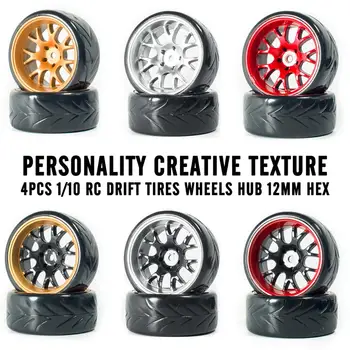 "CS" makes driving more realistic by forcing the pilot to counteract the steering, just like real-time pilots do. The most popular models currently are MST Ms-01d, Yokomo DIB, Tamiya TT01-D and HPI-Racing Sprint 2 Drift. New Asian brands have entered the market (including Street Jam, 3Racing, EnRoute). However, sometimes it can be difficult to get a certain chassis in France, like Yokomo for example.
"CS" makes driving more realistic by forcing the pilot to counteract the steering, just like real-time pilots do. The most popular models currently are MST Ms-01d, Yokomo DIB, Tamiya TT01-D and HPI-Racing Sprint 2 Drift. New Asian brands have entered the market (including Street Jam, 3Racing, EnRoute). However, sometimes it can be difficult to get a certain chassis in France, like Yokomo for example.
Propulsion chassis are used more and more, unlike their real size predecessors, RC propulsion systems have a structure and mass distribution that makes it difficult to control them in corners, and therefore they must be equipped with a gyroscope to facilitate their control, because the very light weight of the RC-Drift machines makes the driving very lively. Therefore, this adds additional complexity to the pilot, but increases realism.
Today many modellers with some experience with rc-drift are working on this topic and coming up with more and more successful personal creations. But this is out of reach for beginners due to the complexity of mass distribution to be improved and because piloting has become more specialized.
But this is out of reach for beginners due to the complexity of mass distribution to be improved and because piloting has become more specialized.
Motorization is mostly electrical. Engines can be more or less powerful depending on build or technology. The practice of drift in a heat flux is theoretically possible, but remains very uncommon. In addition, heat engines prohibit the use of vehicles indoors mainly due to exhaust gases.
In addition, in the case of heat engines, the problem of engine cooling is a problem because the engine is very hot, and the low speed of the vehicle and the angle of the vehicle are not sufficient to cool the engine.
The advantage of RC drifting in this area is its very low cost, in contrast to RC competition cars where rubber or foam tires have a very short life. In general, the practice of drifting is done by replacing tires with "ABS" plastic parts (or polyethylene tubing). ABS tires can be purchased pre-cut from various RC drifting marketplaces. Many have good finishes and look like real tires. You can also make your own tires with some small tools and good will. Some make their tires out of very slippery PVC pipes found in home improvement stores, and they are relatively effective on concrete. Only its light gray color lacks aesthetics, some craftsmen prefer to paint the sides. ABS tires can last several hours, PVC tires even longer.
ABS tires can be purchased pre-cut from various RC drifting marketplaces. Many have good finishes and look like real tires. You can also make your own tires with some small tools and good will. Some make their tires out of very slippery PVC pipes found in home improvement stores, and they are relatively effective on concrete. Only its light gray color lacks aesthetics, some craftsmen prefer to paint the sides. ABS tires can last several hours, PVC tires even longer.
Nowadays, well-known manufacturers have developed RC drift tires to make driving more realistic and controllable. After a series of tests with practitioners, the HPI T-Drift, made from a mixture of several different plastics, and the Yokomo ZR-DR02 single ring proved to be the most effective. However, drifting is a relatively new sport, in any case, technology and technique are still constantly improving.
1/10 scale correct tire sizes:
Another important aspect of RC drifting is the body as it is seen for the first time on these RC cars.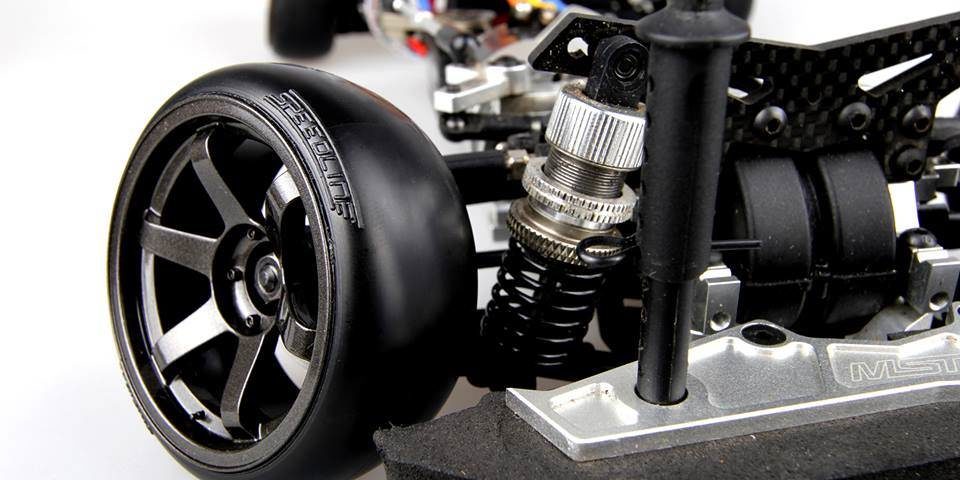 Some will prefer to replicate their favorite cars from the drifting championship in full size, others will prefer a more personal style, but sometimes they have nothing to envy of real cars. They can be equipped with LEDs, neon lights, a wide kit, fins and all the accessories for maximum realism such as radiators, fins, headlights, exhaust, etc. Personalized paintings are also of interest in the search for perfection. Others have gone so far as to create their own bodies. Body personalization can go a long way with personalized decals.
Some will prefer to replicate their favorite cars from the drifting championship in full size, others will prefer a more personal style, but sometimes they have nothing to envy of real cars. They can be equipped with LEDs, neon lights, a wide kit, fins and all the accessories for maximum realism such as radiators, fins, headlights, exhaust, etc. Personalized paintings are also of interest in the search for perfection. Others have gone so far as to create their own bodies. Body personalization can go a long way with personalized decals.
Body choice is also very wide between Japanese, European and American vehicles. The last few years have seen the rise of artisanal manufacturers reproducing mostly Japanese sports cars with precision and finish sometimes surpassing international manufacturers.
Many study guides are available on dedicated websites.
The overall budget for RC drifting practice does not have to be very expensive. You can spend tens to several hundred dollars (or more) just on a car without electronics and a battery. It all depends on the level of options and the design of the chassis in question. For example, adjustment options are available as standard on top models, but only as an option on others. However, all practitioners would agree that only the know-how and skill of the driver (which he provided to assemble his own car from start to finish) mattered.
It all depends on the level of options and the design of the chassis in question. For example, adjustment options are available as standard on top models, but only as an option on others. However, all practitioners would agree that only the know-how and skill of the driver (which he provided to assemble his own car from start to finish) mattered.
One of the unifying and very widespread aspects of RC drifting is the near-professional production of videos from meetings or competitions. This support is often used to promote RC Drift and to be featured on UGC video sites (CGU in French or user-generated content), which promotes RC Drift and redirects viewers to dedicated forums.
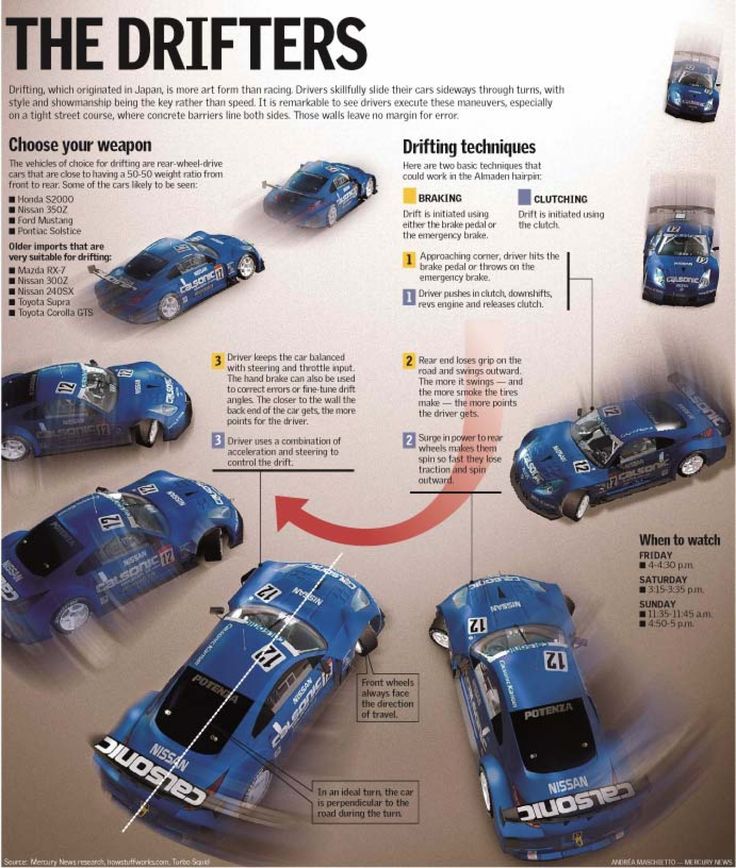
| ||||||
|